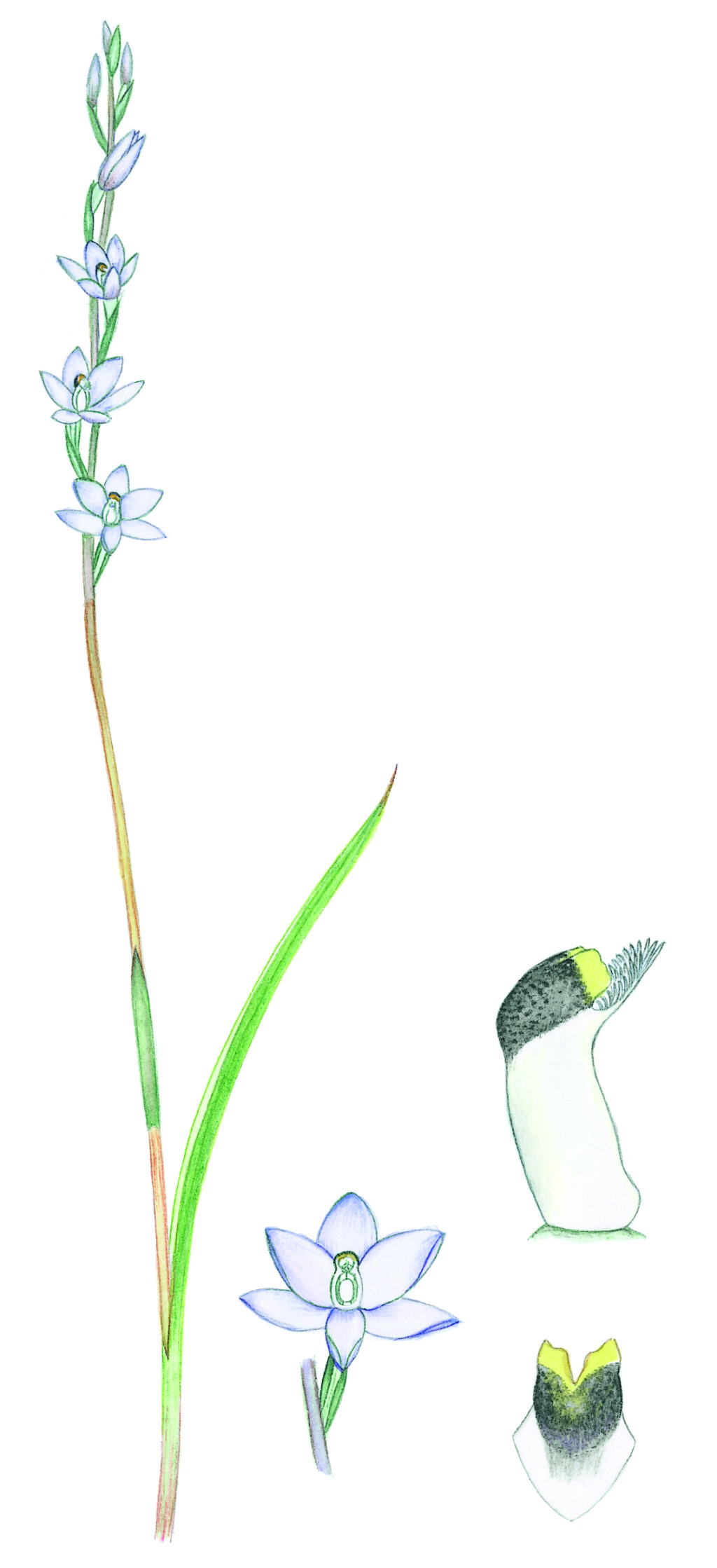Thelymitra pallidiflora
JeanesFlowering stem erect, straight, 15–45 cm tall, 1.3–3 mm diam., straw-coloured to purplish. Leaf linear to linear-lanceolate, attenuate, 10–25 cm long, 5–12 mm wide, thin-textured to fleshy, canaliculate, ribbed abaxially, sheathing at base, pale to dark green sometimes with a purplish base. Inflorescence 2–10-flowered, open. Sterile bracts usually 1, rarely 2. Pedicels of lower flowers often partially decurrent on rachis. Perianth segments lanceolate to ovate, 9–15(–21) mm long, white to very pale blue. Column 5–6.5 mm long, white or very pale blue at base; mid-lobe expanded into a hood over the anther, tubular, inflated, curving gently through c. 90 deg. yellow with a black to dark brown collar, apex usually deeply bilobed; lateral lobes converging, 1–1.7 mm long, digitiform, porrect at base then curved upwards, each with a toothbrush-like arrangement of white hairs terminating in front of the mid-lobe. Anther inserted about mid-way along column, shortly beaked. Flowers Oct.–Nov.
GipP, OtP. Apparently endemic to south-central Victoria in grassy and heathy woodlands on sandy soils.
An endangered species known from only 4 sites and less than 100 plants.
Flowers are self-pollinating and only open on warm, humid days.
 Spinning
Spinning
